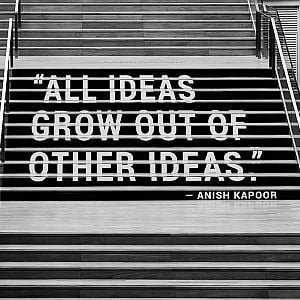
Building Up Ideas: The Power of Saying ‘Yes, and…’
Imagine being in a brainstorming session where every idea, no matter how odd or impractical, is welcomed with open arms. Instead of shooting down ideas with a ‘Yes, but…,’ picture yourself saying ‘Yes, and…’ to build upon them. This simple shift in mindset can turn even the most outlandish thoughts into valuable stepping stones for innovation.
When someone proposes a new idea, it’s easy to spot the flaws. The newer the idea, the more problems it might have. Yet, if we focus too much on these flaws, we risk discarding potentially great ideas. Even the craziest ideas can have a tiny nugget of potential or serve as what Edward de Bono called an ‘intermediate impossible’—a seemingly impractical idea that can lead to a brilliant one.
The Power of Building Techniques
Using building techniques, or ‘hitchhiking’ on ideas, can be incredibly powerful and beneficial. Here’s why they’re worth incorporating into your thought process:
- Turning Any Input into Gold: Whether it’s a random news story, a misunderstanding by someone who isn’t an expert, a boring office conversation, or an accidental meeting, you can extract useful ideas from almost anything.
- Staying Engaged: These techniques help you stay attentive and interested for longer periods.
- Encouraging Others: When people see their ideas being valued and built upon, they feel encouraged. This boosts morale and fosters a positive environment for creativity.
- Learning and Appreciation: This approach makes people want to engage in the process again. They learn a lot from it and appreciate you and your organization more.
Practical Techniques for Building on Ideas
Ready to start building on ideas? Here are some practical techniques to help you get started:
- Focus on the Positive: Highlight the useful parts of an idea. For example, say, ‘Yes, that idea would allow us to…’ This keeps the momentum positive and constructive.
- Tackle Problems Creatively: If an idea has issues, phrase them in a way that invites solutions. For instance, ‘That idea raises an interesting problem. I wonder how we could…’
- Combine Ideas: Merge the idea with other existing ideas to see what new possibilities arise.
- Transform the Idea: Change the idea in various ways—make it bigger, smaller, reverse it, or switch the roles involved.
- Use as an Exemplar: Think about different categories the idea could belong to and what other ideas these categories might suggest.
- Abstract or Concrete: Describe the idea in more abstract terms or make it more concrete. Ask questions like, ‘What is this idea an example of?’ or ‘What examples are there of this idea?’
- Different Mediums: Represent the idea in a different medium. Draw it, role-play it, or even sculpt it. Sometimes a different perspective can spark new insights.
- Reframe the Idea: Look at the idea from someone else’s viewpoint, from a different hierarchical level, in various contexts, or over different time-scales. This can reveal new angles and opportunities.
- Key Terms and Thesaurus: Abstract the idea to a few key terms and look up their equivalents in a thesaurus. This method can uncover related concepts and ideas that might not have been immediately obvious.
- Analogies: Find analogies to the idea and use them as stimuli for new thoughts. Analogies can often provide a fresh perspective and lead to innovative solutions.
- Train of Thought: Use the idea as a starting point for a train of thought. As you become more practiced in building techniques, this process will become more automatic and natural.
Building a Culture of Creativity
Creating a culture that embraces these building techniques can have far-reaching benefits. When team members feel their contributions are valued, they become more invested in their work. This can lead to higher job satisfaction, increased loyalty, and a more collaborative team dynamic. By encouraging a ‘Yes, and…’ mentality, you cultivate an environment where creativity thrives and everyone feels empowered to share their ideas.
Additionally, fostering this kind of open-mindedness can lead to more innovative solutions to problems. When people aren’t afraid to think outside the box and take risks, they are more likely to come up with groundbreaking ideas. This not only benefits the organization but also contributes to personal growth and professional development.
Overcoming Challenges in Building Techniques
While the benefits are clear, implementing these techniques can sometimes be challenging. It requires a conscious effort to shift from a critical mindset to a more constructive one. Here are a few tips to overcome these challenges:
- Practice Regularly: Make building techniques a regular part of your meetings and brainstorming sessions. The more you practice, the more natural it will become.
- Encourage Participation: Create a safe space where everyone feels comfortable sharing their ideas. Reinforce the value of every contribution, no matter how small.
- Lead by Example: As a leader, demonstrate the ‘Yes, and…’ approach in your interactions. Your team will follow suit if they see you modeling this behavior.
- Provide Training: Consider offering workshops or training sessions on creative thinking and building techniques. This can equip your team with the skills they need to contribute effectively.
By embracing and practicing these techniques, you can transform your team’s approach to problem-solving and idea generation. If you’re eager to dive deeper into creative techniques, the ‘YES you can’ ebook series offers 48 techniques to explore and practice. Embrace the power of building on ideas, and watch your creativity soar!
If you would like to learn more about using creative techniques then you might be interested in the ‘YES you can’ ebook series which has 48 techniques for you to try.
Share this content:
